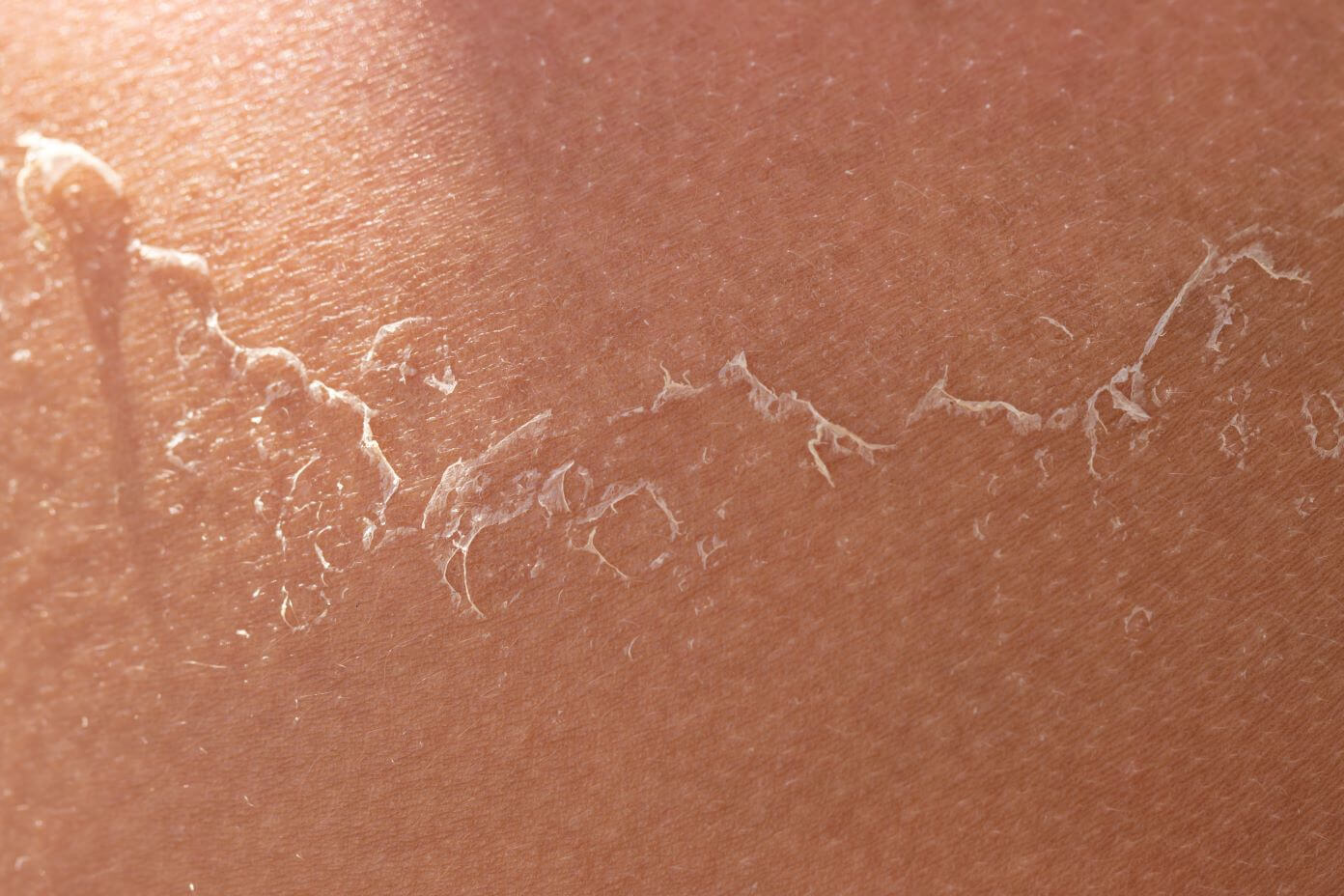Peeling skin is a common side effect of numerous conditions. In many cases, it’s a mild symptom that can be addressed with small changes to at-home skincare routines. In other situations, you may need to work with a dermatologist to develop a solution. According to Dr. Jennifer Holman of the Center for Aesthetic and Laser Medicine in Tyler, Texas, “Peeling skin is connected with a wide variety of chronic skin conditions, and it may even be a symptom of underlying systemic health concerns. For this reason, it’s important to partner with a dermatologist to diagnose the cause of skin peeling before you attempt to treat this condition.” In this blog, Dr. Holman unravels the mystery of peeling skin to help you understand the causes and the best way to address these conditions.
Common Causes of Peeling Skin
When it comes to underlying causes of skin peeling, Dr. Holman says, “Peeling skin doesn’t result from one thing. Instead, there are a variety of factors that cause skin to peel. By understanding the various reasons why skin peels, my patients are better equipped to address these concerns with skincare products at home or give their dermatologist the necessary information to ensure they offer the right treatment.”
Some of the most common causes of peeling skin include:
- Allergic reaction – This can be related to plants, dyes, fragrances, and other elements that come in contact with skin. It may also be related to an allergic response to foods or medications.
- Skincare products – In some situations skincare products and cosmetics cause skin to peel. This is often related to allergies to specific ingredients. However, it may also be connected to the way the products work. For instance, some ingredients are very drying, which causes skin to peel. Others accelerate skin cell turnover, leading to the flaking away of dead skin cells.
- Infection – Staph, fungal infections like athlete’s foot or jock itch, and bacterial infections can all lead to skin peeling.
- Burns – Chemical or heat burns can both lead to peeling skin as it heals.
- Contact dermatitis – Irritation or friction on the skin that causes a negative response and may include peeling.
- Skin conditions – Common skin conditions like eczema, psoriasis, and seborrheic dermatitis may all cause skin peeling.
- Skin type – Those who have dry or sensitive skin are much more likely to experience peeling skin in response to environmental factors and other common causes.
Environmental and Lifestyle Factors
In addition to these common underlying causes of skin peeling, some environmental elements increase the risk for peeling, including:
- Sun exposure – Following a sunburn, skin often peels as it heals. Even without burning, prolonged sun exposure can lead to dryness and skin peeling.
- Dry weather – Over the winter months or in areas that are naturally dryer, skin tends to lack hydration. This can lead to flaking and peeling skin.
- Over-washing – It’s important to keep skin clean, but some cleansers are harsh, and they strip necessary moisture from skin, causing peeling.
- Hot water – Showers, handwashing, doing the dishes, hot tubs, and other skin exposure to hot water can all strip hydration and lead to peeling.
- Inadequate moisturizing routine – Whether the wrong products are used or the skin isn’t moisturized frequently enough, skin dryness is a major cause of peeling.
Medical Conditions Leading to Peeling Skin
General health concerns, medical conditions, and certain treatments also contribute to skin peeling. Some medical conditions and treatments that contribute to skin peeling include:
- Acral peeling skin syndrome – A rare genetic condition that causes peeling of the outer layers of skin. Skin peeling related to this condition is typically painless.
- Kawasaki disease – Most common in children, this disease causes inflammation in the blood vessels that leads to numerous adverse effects, including skin peeling.
- Immune disorders – Pemphigus is an autoimmune disorder that can lead to blistering and skin peeling on the skin inside and around the eyes, nose, mouth, throat, and genitals. Sjorgen syndrome is another autoimmune disorder that causes dry, peeling skin on and around the lips.
- Cancer treatment – Radiation and chemotherapy are both cancer treatments that are known to wreak havoc on the body, including drying out skin and leading to skin peeling.
Treatment and Prevention Tips
Treatment for skin peeling should be geared toward soothing symptoms and addressing underlying causes. Dr. Holman says, “It’s so important to receive an accurate diagnosis of the underlying cause of skin peeling, so we can provide the right treatments. We start by addressing symptoms immediately. If there’s itching, we may recommend topical corticosteroids and other oral or topical allergy medications. If there’s pain or inflammation, we often recommend over-the-counter pain relievers like nonsteroidal anti-inflammatory drugs (NSAIDs). For infections, we will prescribe antifungals or antibiotics. Any treatment plan will be directly related to the causes of skin peeling.”
In addition to following your dermatologist’s recommended care plan, there are some steps you can take at home to prevent skin peeling and address symptoms, including:
- Choose gentle skincare products – Look for skincare products marked as hypoallergenic. You can also select products that are free of dyes, parabens, fragrances, and other harsh chemical ingredients.
- Take care when cleaning – Clothing detergents and household cleaners can also wreak havoc on skin. When possible, you should choose products that are gentle. When cleaning, wear gloves and try to avoid getting cleansers on other parts of the skin.
- Change your bathing routine – Skip baths and take shorter showers with cooler water. Hot water strips moisture from skin.
- Use a humidifier – Restoring moisture to the air, especially during the dry winter months, can alleviate skin irritation and dryness.
- Protect skin from sun damage – Apply sunscreen daily and limit sun exposure as much as possible.
- Stay hydrated and eat healthy – The body uses nutrients for the most essential functions first, so the skin often receives inadequate hydration and nutrients when people have poor diets or fail to drink enough water.
When to See a Dermatologist
It’s important to schedule a consultation with a dermatologist any time you have unexplained skin health concerns. If you have peeling skin, and you don’t know what caused it, you’re experiencing pain or discomfort, or you have a fever, it’s time to visit a dermatologist. They can help you diagnose underlying causes of skin peeling and develop a plan to address the symptoms and the cause to keep skin healthy.
Take Action to Address Peeling Skin
If you notice skin peeling, reach out to a dermatologist to address the underlying conditions. Before you call, consider the possible factors that caused skin peeling, so you can be ready to discuss the appropriate treatment options with your dermatologist. Dr. Holman says, “The more information you can give your dermatologist about any new skincare products, cleaning agents, or other changes that may be involved in the skin health concerns, the better.”
Schedule a Consultation Session with Our Knowledgeable Dermatologists
Concerned about your peeling skin? Book an appointment with our expert dermatologists today for personalized care and solutions. We make getting started easy. Just take a few moments to schedule a consultation, using our easy online request form. Once we receive your scheduling request, one of our caring team members will be in touch to finalize the details of your upcoming visit.
Find a location near me
or


